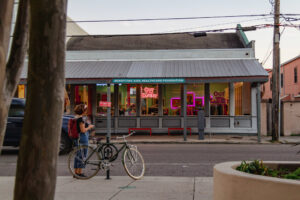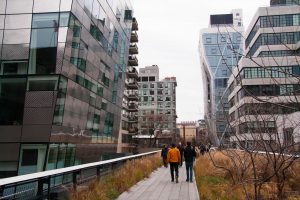Off Ponus Ridge Road in New Canaan, Connecticut, sits the signature work of Philip Johnson. Built between 1948-9, the Glass House is the architect’s former residence, designed in perfect proportion and inspired by Mies van der Rohe’s Farnsworth. It’s now a National Historic Landmark, owned by the National Trust for Historic Preservation. And on an unusually sweltering spring day, my sister and I decided to check it out.
The Glass House is part of a 47-acre estate which includes other buildings and architectural structures designed by Johnson throughout his career. The house itself is the main attraction, of course, and where we began our self-guided tour.
It’s a lot smaller than I imagined, measuring just 55 ft (16.8 m) long and 33 ft (10.1 m) wide. All four of it’s walls are made from glass, each with a central door that opens out onto the landscape. This exposes the house almost entirely to the outdoors, save for the cylindrical brick entrance to the bathroom with a fireplace on the other side. The building is completed by the nearby Brick House, both of which were designed in 1945-8.
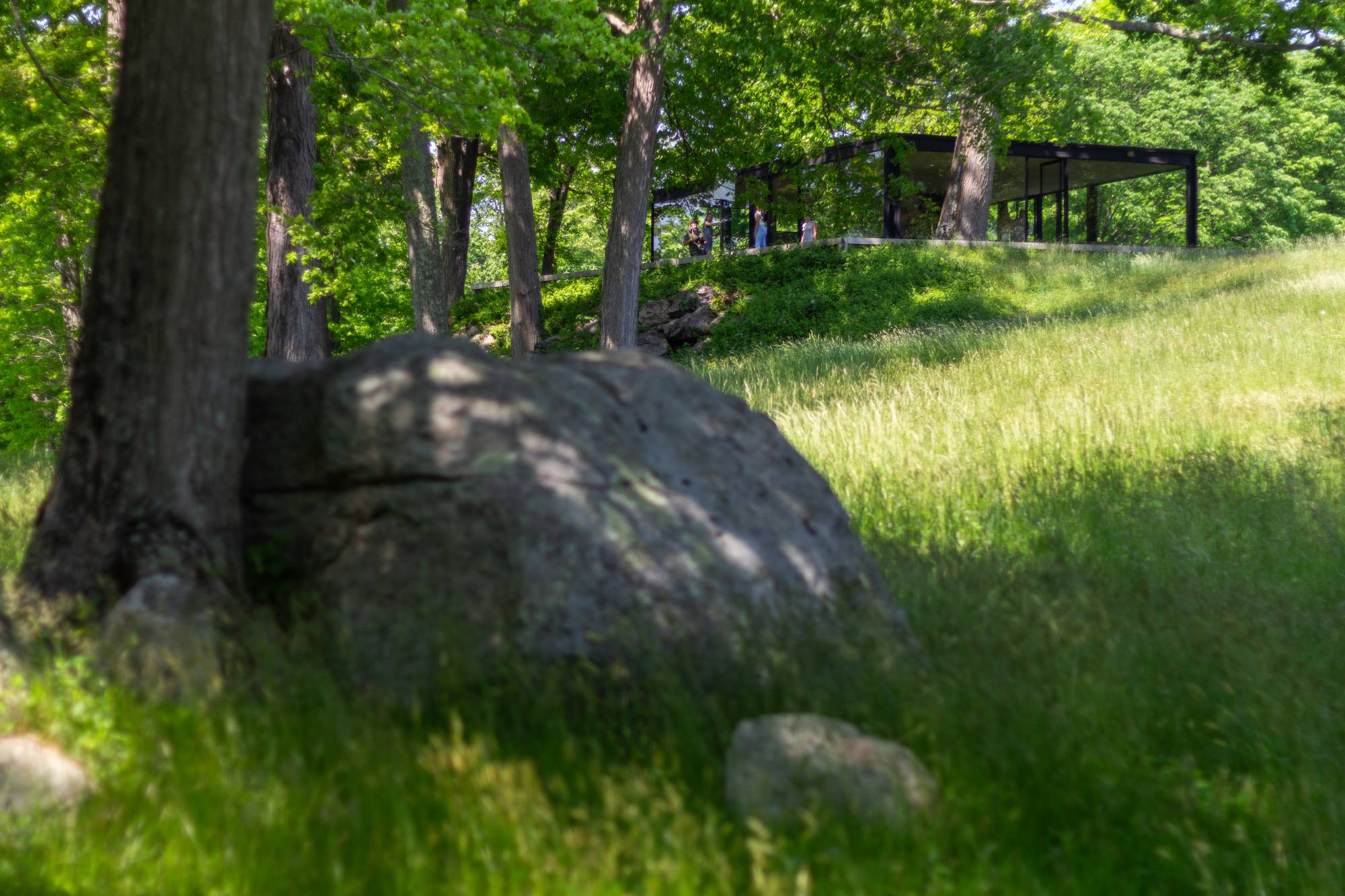
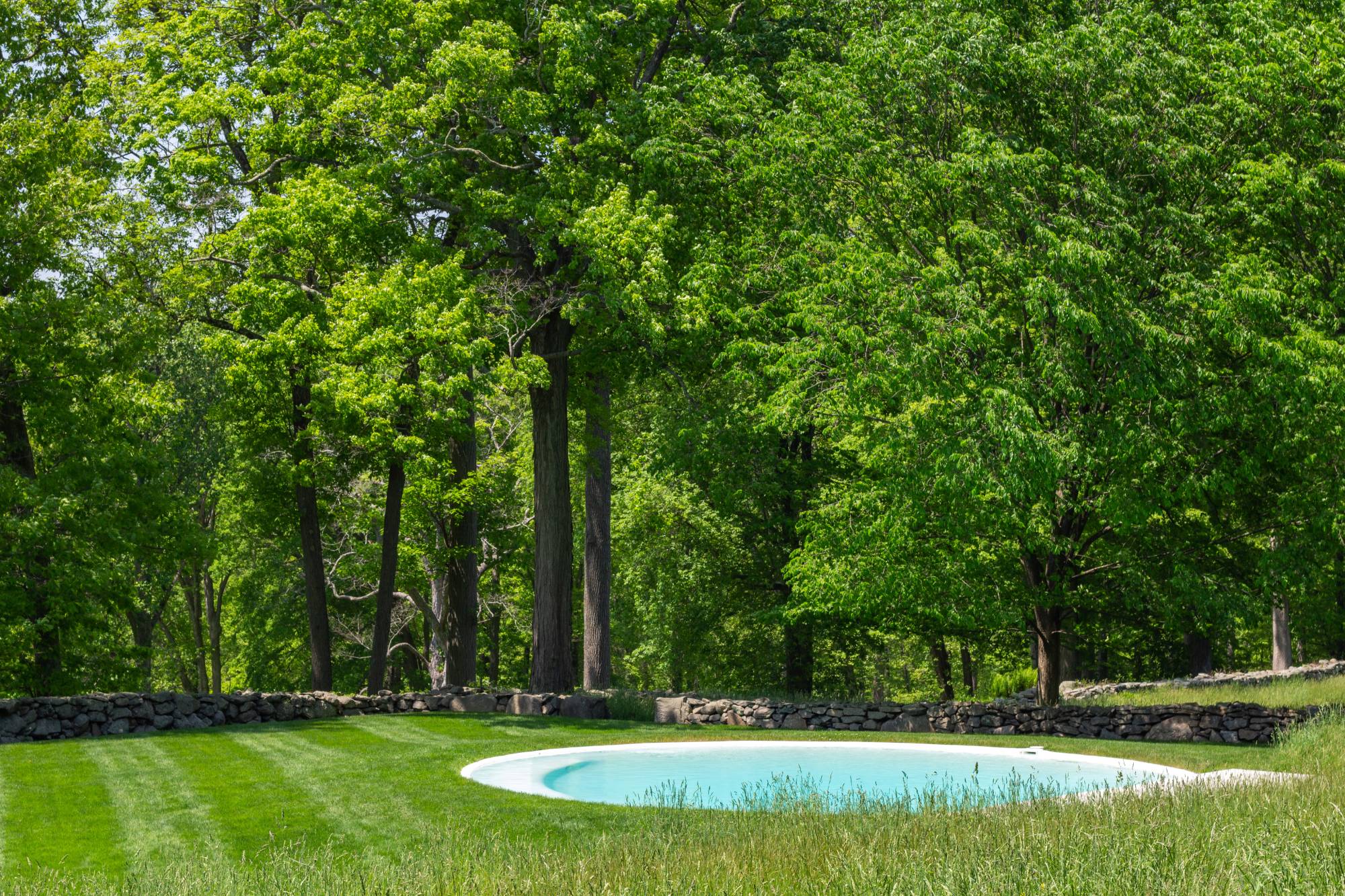
The house also includes kitchen, living, dining, and bedroom spaces, which are all situated inside the one room. Although popular today, this open-concept floor plan was pretty rare in the 1940s. A series of built-in cabinets separates the sleeping space from the rest of the house for privacy. This area also includes a desk, which faces out onto the front lawn. A pretty cool spot for writing, I thought. The lawn includes a circular pool addon, which Johnson designed and built in 1955.
The Glass House sits atop a hill that overlooks a man-made pond, offering panoramic views of the surrounding landscape. At the edge of the water is the Pavilion in the Pond, which was constructed in 1962. It’s made from concrete arches and roof sections and was originally part of a water jet fountain. Built with a false scale, it plays with the viewer’s perspective.
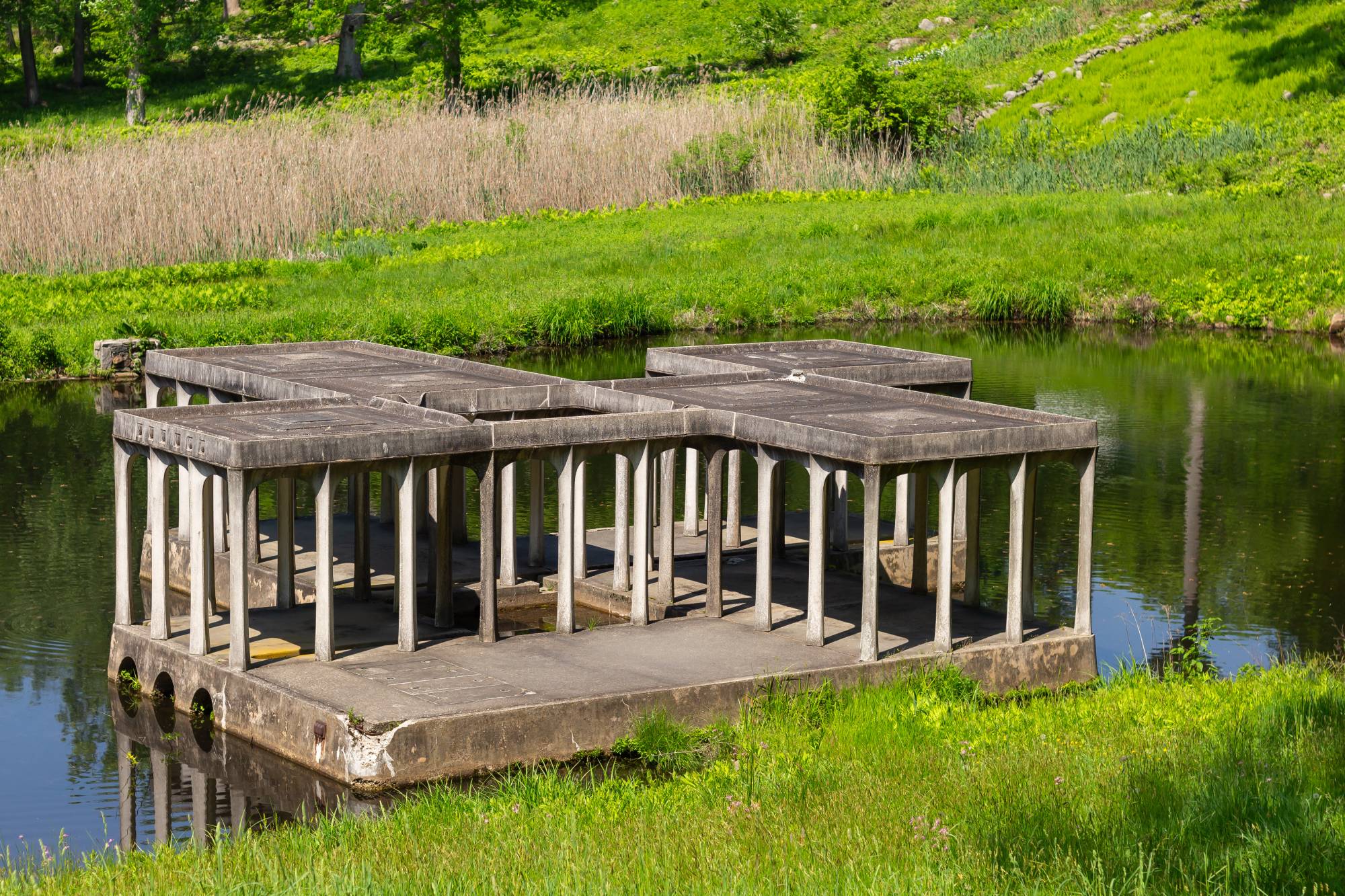
A short ways away from the Pavilion lies the Monument to Lincoln Kirstein. Built in 1985, the structure is named after the co-founder of the New York City Ballet, who Johnson befriended as an undergraduate at Harvard. The architect frequently climbed the 30 ft (9 m) tower, which he called the “staircase to nowhere.” It consists of cantilevered concrete blocks piled up in a way that is meant to make the climber feel unbalanced. At the top step, Johnson engraved a quotation of Lincoln’s choosing, daring his guests to climb to the top to read it.
A field away from the Glass House is the Studio, a one-room workspace and library. Built in 1980, it houses over 1,400 volumes of architecture books. The space also includes a fireplace and a skylight. From the small interior window, you can see the nearby Ghost House.
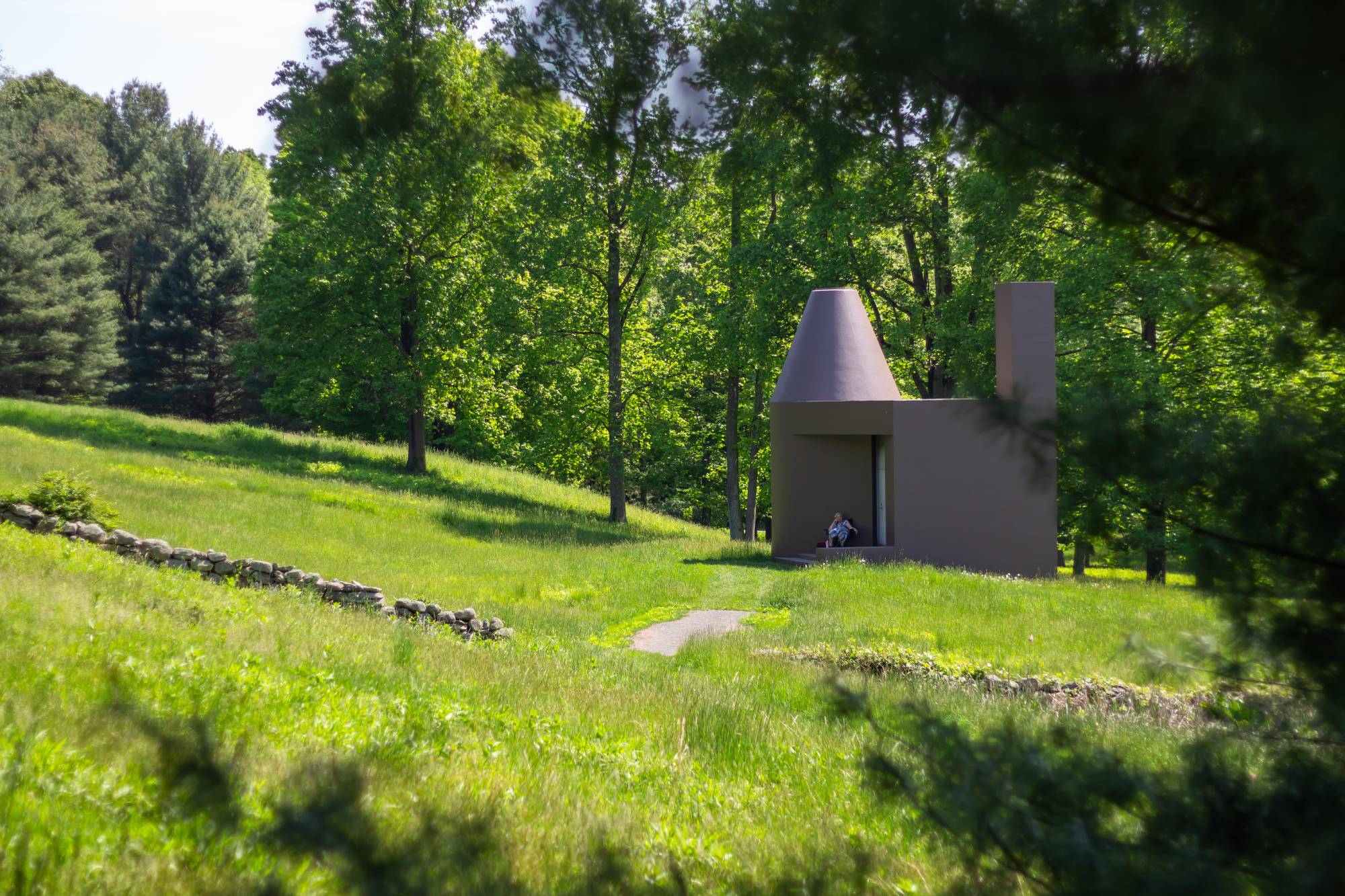
Our next stop was the Sculpture Gallery, which is inspired partly by the Greek islands and their many staircase villages. The building features a glass ceiling, which is supported by steel rafters. When the sun shines in, patterns of light and shadow begin to dance on its interior walls.
It’s a beautiful site, so much so that Johnson debated whether he should move his residence here from the Glass House. In the end, he decided against it, remarking that he would have nowhere to put the sculpture. The Gallery includes the works of Michael Heizer, Robert Rauschenberg, George Segal, John Chamberlain, Frank Stella, Bruce Nauman, Robert Morris, and Andrew Lord.
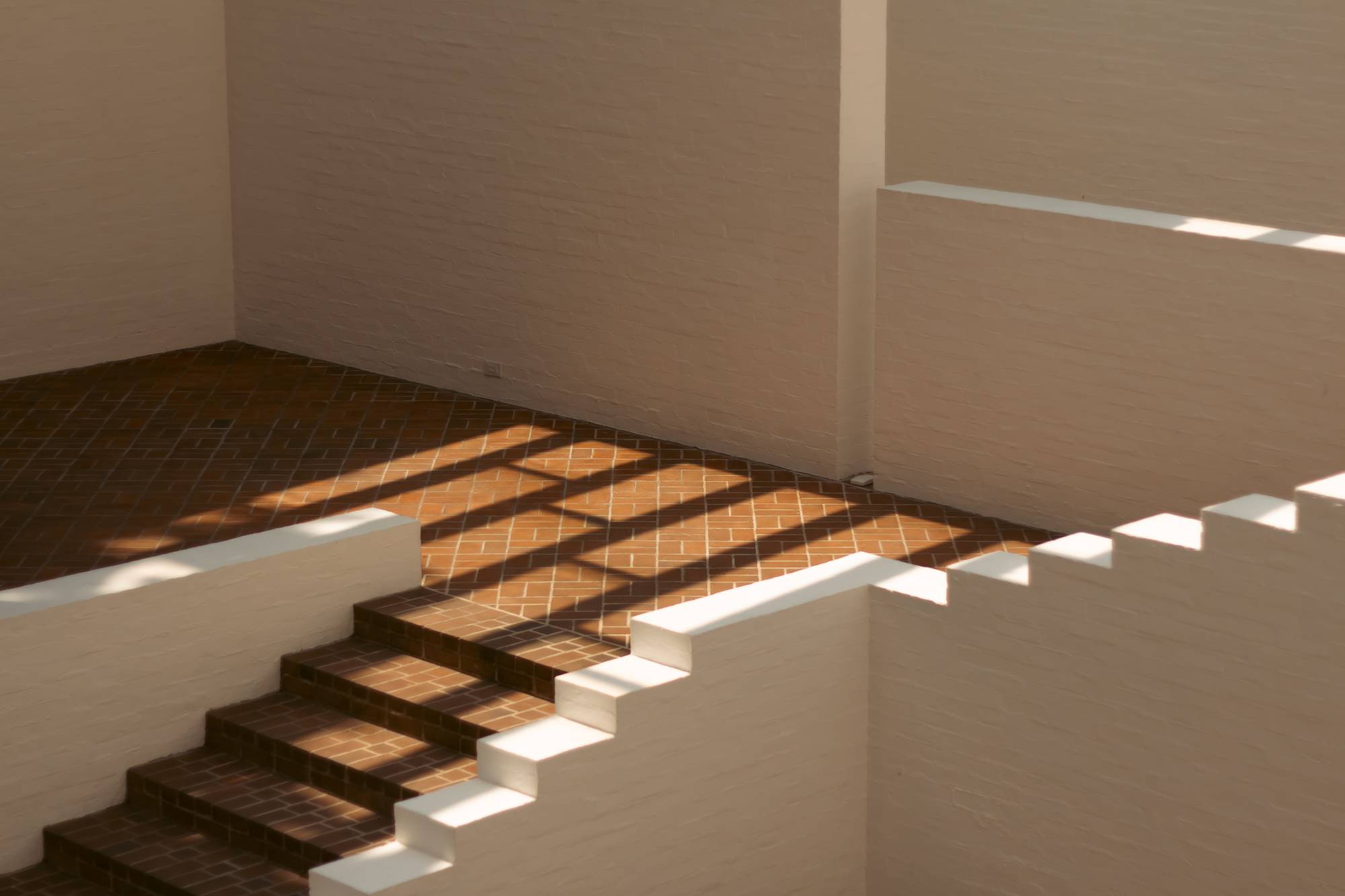
The estate also includes the Painting Gallery, which was built in 1965. It houses the paintings that Johnson and his partner, David Whitney, collected throughout their lives. The permanent collection includes works by David Salle, Andy Warhol, and Frank Stella. The entrance is marked by a pair of doors affixed to the side of a grass-covered mound. Blink, and you’ll miss it.
Our self-guided tour ended at Da Monsta, a structural building constructed from gunite in 1995. The nickname came from Johnson’s feeling that the building possessed a lifelike quality. It was inspired by a museum in Dresden, which was designed by Johnson’s friend, Frank Stella. It serves as an exhibition space, showcasing short films about the estate.
There are 14 architectural structures in total that can be viewed on the Glass House grounds. Just be aware that the site is only open from April through December. There are also different exhibitions and events to check out throughout the tour season.
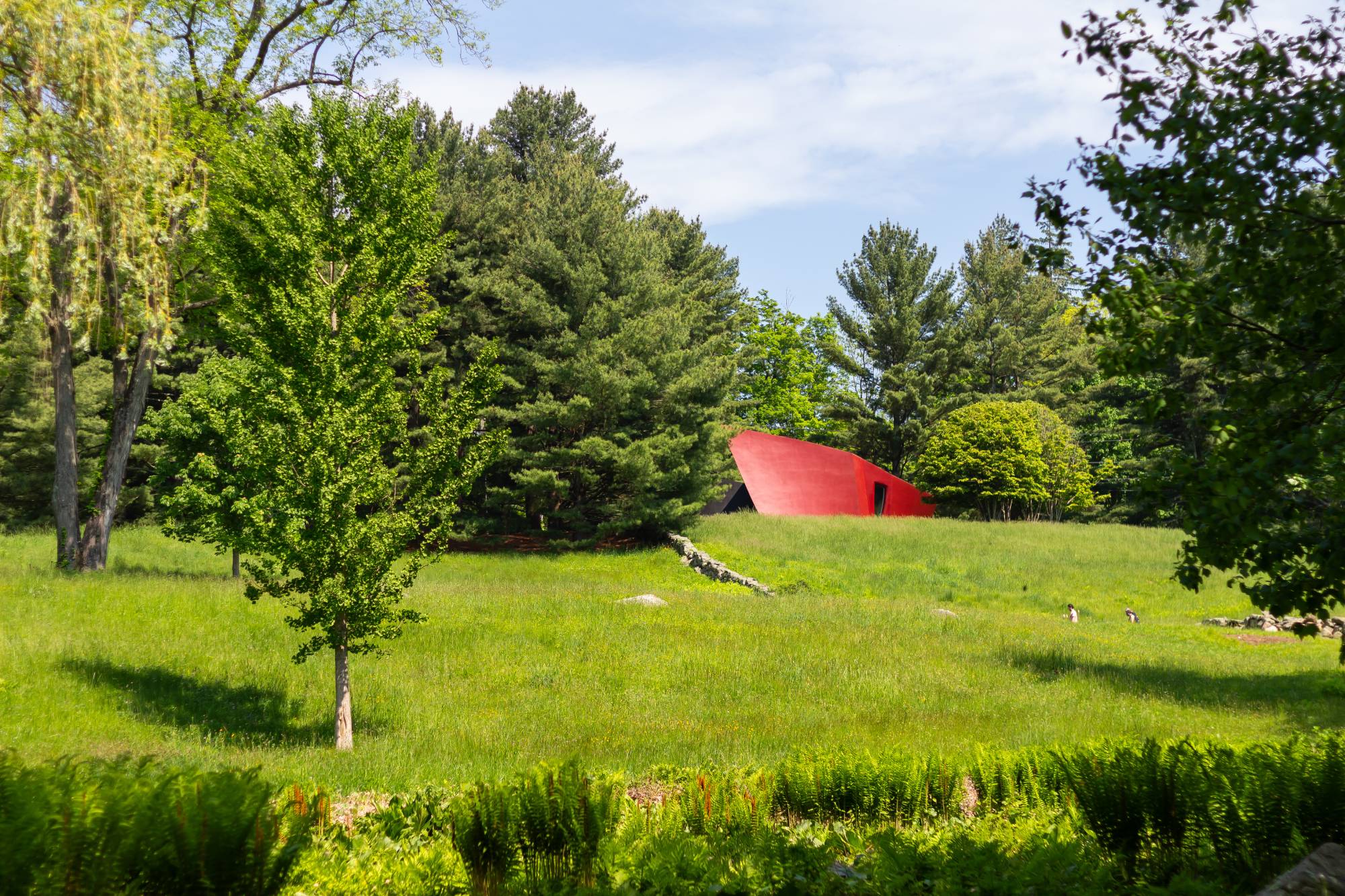
Visit the Glass House
The Glass House is only accessible via shuttle bus from the Visitor Center at 199 Elm Street in New Canaan, CT. It’s located directly across from the New Canaan train station on the Metro-North line. Traveling from the city? Take the New Haven line from Grand Central or Harlem-125th St to Stamford (about 1 hour). At Stamford, switch to the New Canaan line and get off at New Canaan (about 20 min).
Hours: 9:30–17:00 daily except Tues & Wed (April–December)
Admission: $25–$250 (Reserve in advance)
Website









